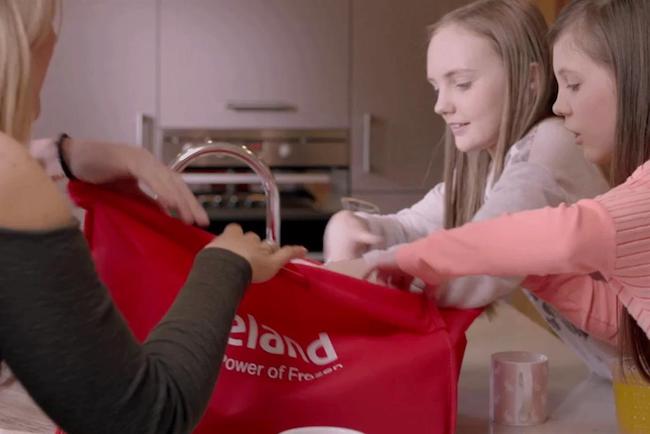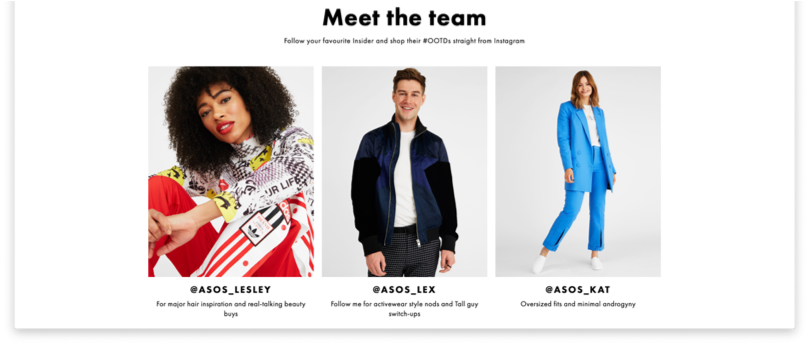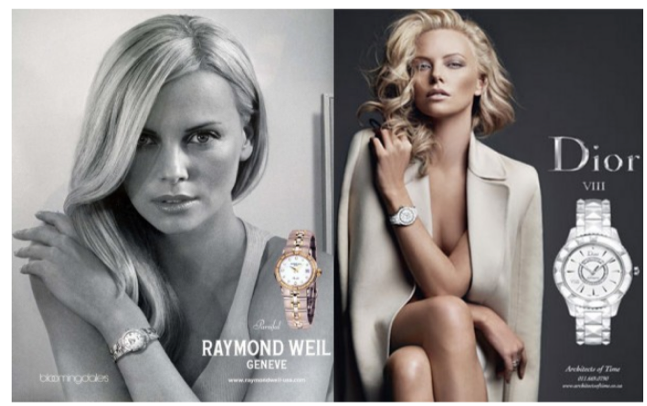3 min read
Honchō Scoops Up Two UK Search Awards!
It’s official, we've added not one, but two shiny trophies to our awards cabinet! We’re over the moon to share that we’ve triumphed at the UK Search...
Without the role of influencers, the retail industry would not be as we know it. Retail brands are selective with who their influencers are and how they are used to promote the company’s brand and products. Influencers bridge the divide between the retail giant and its customers, allowing for the product to become part of a consumer’s everyday life. By living on social media platforms, such as Instagram, influencers are able to interact with thousands of people with each post. Some brands would give full power to the influencer by finding a figure that a specific demographic would look up to. For instance, sport clothing brands may choose an athlete from a certain part of the country that a lot of their customers come from in order to resonate a closer relationship with their target market. The Honchō outreach team has picked out moments from digital marketing that have stood out as particularly interesting for the retail industry.
“More and more retailers are turning to influencer marketing to get their latest product out there in front of their target audiences as it is becoming one of the most effective marketing methods. Customers trust and are more influenced by real people than they are traditional advertising. Nowadays, people research everything they buy and read through endless amounts of reviews to make sure what they are going to purchase is worth it.
Finding influencers that have a good social presence and/or blog and sending them the latest product to review and showcase to their followers seems to be paying off for retailers. Not only are the brand’s products being advertised for free (well the cost of the product!), real reviews are being shared with real honest opinions that people can relate to.
When brands started doing influencer marketing, they just wanted to get honest reviews from real people that can help convince other customers to purchase their product. Now, influencer marketing can help achieve the following:
The best thing about influencer marketing is the fact it is all trackable. Every share, like, comment and link can all be monitored and measured against. There are lots of social listening tools out there that can calculate how many engagements a post has had. As well as engagements, you can also track conversions in tools such as Google Analytics using segments or UTM’s.
Here at Honchō, we like to measure this data to show the value of the links we are gaining. It is also a great opportunity to discover which type of links bring the most value. In a recent case study, we found securing links from tier 1 influencers, which consist of magazines and micro influencers, the conversion rate was actually converting at a better rate than the sitewide. Another example of using micro influencers instead of celebs is Iceland Foods. They increased their approval rating by 70% after working with a number of real mums and dads to change consumer perception according to smart insights and econsultancy.
Due to influencer marketing being so trackable, it is definitely a marketing tactic that is going to continue to grow due to the power it has to reach new customers and even change a brands reputation.”

“ASOS, a global fashion and beauty ecommerce store, used influencers to authentically communicate with their audience. The ecommerce giant did this through their ‘ASOS Insiders campaign’. In order to be an ASOS Insider, you must have a high social following and showcase an authentic style that is true to your personality. A group of quirky and cool 20 somethings make up the Insiders. They display a range of fashion styles from different corners of the world, allowing ASOS to be exposed to a wide and diverse audience. For example, Insider Olivia Smith has a following of 18.6k on Instagram alone.
Using non-celebrities as their Insiders, ASOS has bridged the gap between consumer and product by meeting the demand of an audience searching for real life displays of products. Achievable styles and outfits from relatable young people have been the key to ASOS’ influencer success. Following influencers who share similar fashion tastes, piecing together outfits from one online retailer makes fashion inspiration much easier for a consumer largely living on the internet. Therefore, a customer centric experience is created online with a brick and mortar allusion of a sales assistant you can get advice and tips from within store. Moreover, the campaign achieves the main goal of long-term engagement with the ASOS consumer. According to the 2018 company review, the majority of ASOS’ engagements come from women between the ages of 18 and 35 and it has been studied that this demographic responds best to authentic interaction with brands.

Not only did the Insiders campaign increase awareness for the brand but it made sure each style demographic had an influencer they could follow for the latest trends. Proof is shown in the result of an added 17.9 million engagements to the brand through the Insiders’ followers in 2018. By continuously providing fresh and authentic content, the Insiders strengthen the relationship between business and consumer, boosting customer lifetime value. ASOS successfully found the right influencers for their brand and audience, which proved in their increase of organic traffic.”
“Probably the most noticeable change in online marketing has been the rise in power of influencer reviews. Today it is almost a given that consumers will read an end user review before completing an online purchase.
In the beginning, forums or chat rooms were the domain for reviews but then websites like epinions.com began to leverage the power of product reviews. Over the last 5 years the best reviewers; those who cover all of the angles, can get the gist of their opinions across in a fun and easy to consumer manner have begun to influence the marketing mix to now incorporate budget for their services. The best influencers typically have either a strong social media following or a great website that brings lots of traffic. The key to influencer power is their reach and the high trust that consumers have for their opinions.
BOXT’s 2018 study into the web habits of millennials revealed that eight out of ten never purchase online without first reading a review. In the digital age trust is a commodity. To be fair to them, millennials have experienced the maturity of the online shopping experience so they don’t take things at face value. Legacy marketing tactics such as celebrity endorsements still have influence but that is being eroded because consumers know they are being sold to. Celebrity endorsements are paid for and shoppers know this. The biggest impact that influencers have made is that they have wrestled some power and prestige away from celebs and given it to everyday people.
Occasionally a brand will slip up and the aspirational quality of an endorsement wears thin. Just ask Charlize Theron.”

“Influencer posts with a product or brand to their audience. Brand sees increase in traffic and sales. Brand pays influencer. It’s a fairly straightforward marketing formula that has been serving the retail industry well over the last few years. We’re all used to seeing big name celebrities post a picture of themselves wearing a new pair of Nike trainers or a designer watch. But in 2019 so far, it’s the micro influencers that are having the biggest impact on the retail industry.
Take Mrs. Hinch for example, what started out as a nano cleaning and home account with a few thousand followers has taken Instagram by storm and she now has over 2.5 million followers (known as her ever popular #HinchArmy), a book published with Penguin, and multiple partnerships with leading, international cleaning and household brands. Which seems to have surprised nobody more than the stay-at-home mum-to-be herself!

A classic example of the rise in micro-influencers and their trusted influence, which was recognised by Forbes in March “the marketing force of nature”. Micro-influencers are changing the retail industry in particular because a smaller, but more engaged following in a niche setting is reaping bigger results. They seemingly have more power to “influence” in a way that appears more genuine to their followers than every Love Islander advertising the same charcoal toothpaste! A study by Experticity found that 82% of consumers are more likely to act on a product recommendation if it comes from a micro influencer.
Micro-influencers are presenting retail niches with opportunities too. Brands like Minky, Zoflora and Domestos Bleach that Mrs Hinch regularly promotes – for free, as well as paid – may have not considered influencer marketing as a successful tactic for their audience this time last year, but everything from Shark vacuums through to Flash cleaning products can now capitalise on the cleaning trends that Mrs Hinch’s following has created. Retailers in niches should watch out and identify the next up and coming micro-influencers and engage with them from the start to reap long-term results from influencer marketing.”
These are the Honchō outreach team’s chosen moments in digital marketing where the use of influencers have transformed the retail industry. From trackability to celebrity faux pas, the rising power of influencers on marketing campaigns is becoming ever more significant. Here at Honchō we are always looking at what’s about to happen next and spot the next trend – watch this space for more news and updates on how the retail industry can make the most of influencer marketing.
When has an influencer impacted your sales journey? Do you follow influencers on social media? Let us know!

3 min read
It’s official, we've added not one, but two shiny trophies to our awards cabinet! We’re over the moon to share that we’ve triumphed at the UK Search...

5 min read
Understand ecommerce attribution models which attribution models can maximise your marketing efforts and ROI.

3 min read
Explore how social commerce is changing the way we shop online, blending social interactions with digital commerce for a seamless buying experience.